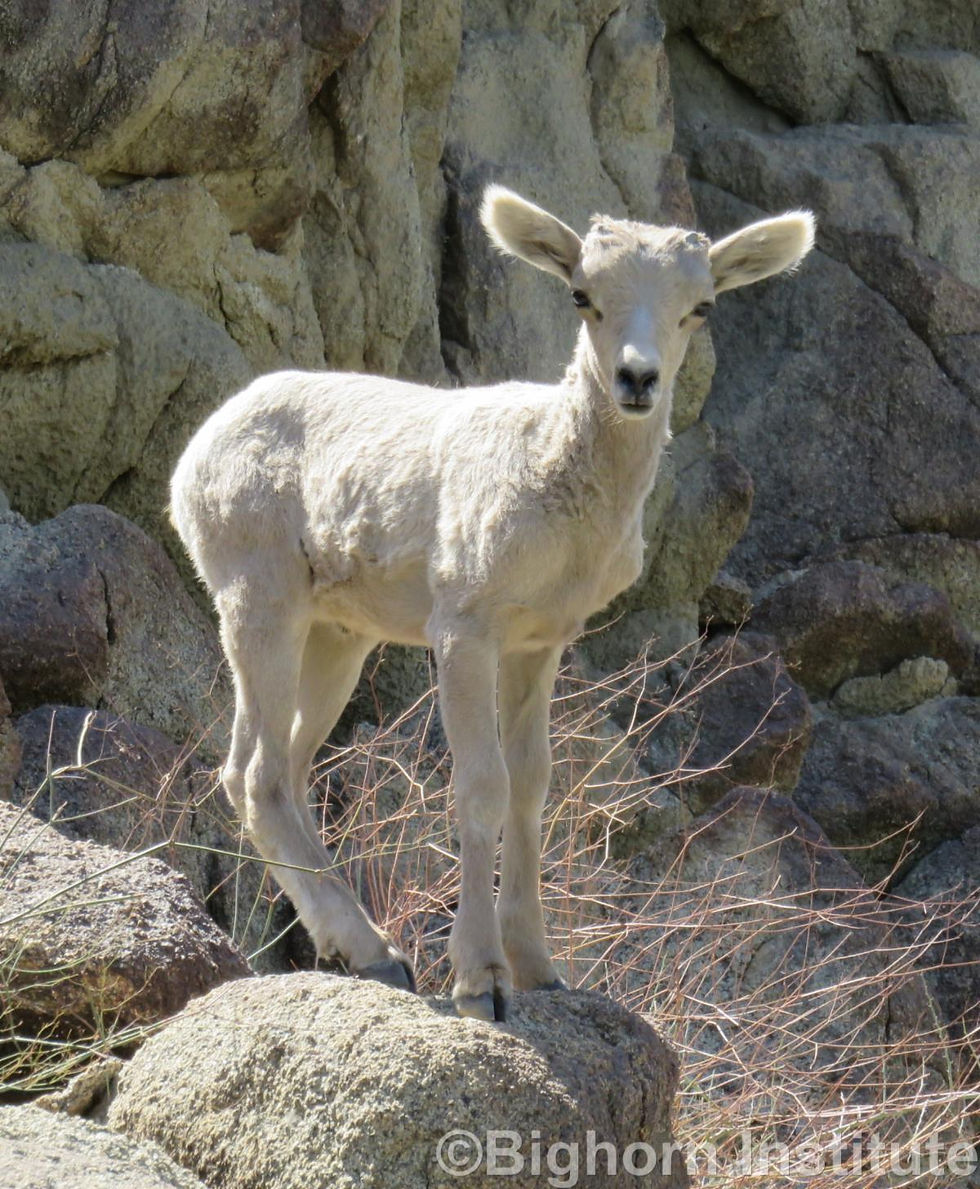July 2023
- Bighorn Institute
- Jul 31, 2023
- 4 min read
New Range-Wide Population Estimate

In December 2022, the California Department of Fish & Wildlife (CDFW) conducted the first range-wide helicopter survey for bighorn sheep in the Peninsular Ranges since 2016 and we finally received the results. The new range-wide estimate is 791 adult Peninsular bighorn sheep, a decline from the 2016 estimate of 884. CDFW saw nearly 70% of all marked sheep during the survey, which strengthened the statistics used to calculate the abundance estimates.
While the population estimate is still above the 750 recovery goal, two of the nine recovery regions had less than the required 25 adult ewes, one of the downlisting criteria in the Recovery Plan, the official “management guide” for this species. Each of the nine recovery regions must have at least 25 adult ewes for 6 consecutive years from 2016 when the “downlisting clock” started to present. The Northern and Southern San Yasidro Mountains recovery regions did not meet that requirement, but the other 7 recovery regions have at least 25 adult ewes. The survey results demonstrate that it’s not yet time to downlist Peninsular bighorn sheep from “endangered” status to “threatened” and we must continue to work for their recovery.
Waterhole Count Results

On July 6th and 7th, the Institute conducted its annual waterhole count in the northern Santa Rosa Mountains, and it was a great success! Although the heat can be tough for our team to sit through, it is the optimal time to sit on a waterhole. This year was the coolest count yet as temperatures only reached 105°, but thankfully, the sheep were still thirsty! We saw a total of 60 sheep, including 13 lambs, similar numbers to last year, although we saw 6 more adults this year. Thank you to our amazing group of volunteers for braving the heat and helping us with this important field work!
My First Time Counting Sheep
by BI Conservation Assistant, Sierra Montes

After working at Bighorn Institute for nearly a year, I finally had the opportunity to participate in the Institute’s much-anticipated annual waterhole count. The count took place over two days both of which were equally exciting. The first day we waited for only a few of hours before we saw our first group of sheep. It was a small group of rams, which slowly made their way to the waterhole. They took their time drinking and hung around for awhile, allowing us to get a very good look at them and their impressive horns. Not long after, another group of sheep joined. The newcomers consisted of a couple of yearling rams and a ewe, all of which came quite close! The yearling rams watched us and head-butted each other, then finally departed following the ewe. The sheep lingered around, which made the first couple of hours of the day exciting. As the afternoon came closer the sheep gradually went out of view and the rest of the day remained quiet. The following day did not start off as quickly. This time it took my group several hours before our first sheep sighting, so when we finally saw sheep, we couldn’t contain our excitement! This first group was the same yearling rams and mature rams we had seen the previous day. We also saw new sheep, another mature ram and a ewe with her lamb which was very exciting! The ram chased the ewe a bit, but she did not seem interested in his pursuit, and the lamb was just adorable of course. This was the last new sighting of the day, and I thought it was the perfect way to end the count. Overall, I really enjoyed the waterhole count and barely noticed the heat when I was watching the sheep. I look forward to doing it again next year!
The Rut Is On

The rut, or breeding season, is in full swing and started earlier this month. The rut typically extends from August through November here in the desert, but the rams certainly won’t be held to a calendar. Rams will travel miles searching for ewes to breed and can lose up to 25% of their body weight during the rut. It’s always nice to see the rams regularly again as they come out of their backcountry bachelor groups looking for the ladies.
Trail Cameras

Last month, we had trail cameras on our Wish List and we want to thank those who donated! We’re looking into the possibility of wireless cameras that allow the images to be sent to your phone or computer in real-time, but require a monthly cellular data subscription. Stay tuned as we navigate the technology available and work to get the best system to help us keep track of the sheep.
In Need of a Gift?

Need a unique and special gift for someone? Here are a few ideas and the best part is that the proceeds go directly to helping the endangered Peninsular bighorn sheep!
Give a gift membership to the Institute – memberships start at just $25/year, are tax-deductible & they can join our member hikes!
Adopt a Bighorn – $100 for a lamb, $150 for a ewe or ram: www.bighorninstitute.org/adopt-a-bighorn
Feed the captive herd for a week - $150 (donation only-not actual feeding)
Help track radio-collared bighorn for a month - $500 (donation only – not actual monitoring)
To donate, please visit our website www.BighornInstitute.org, email (bi@bighorninstitute.org) or call us at 760-346-7334.




Comments